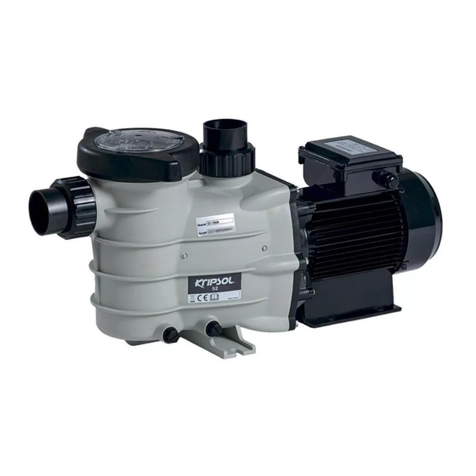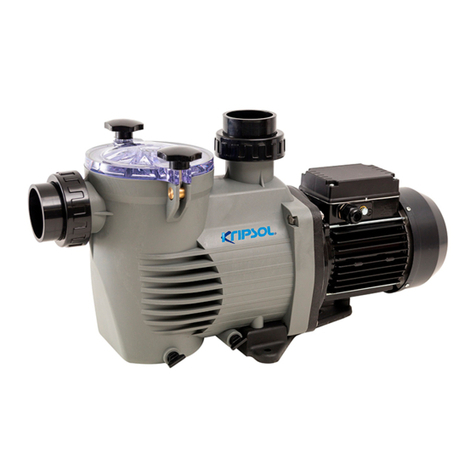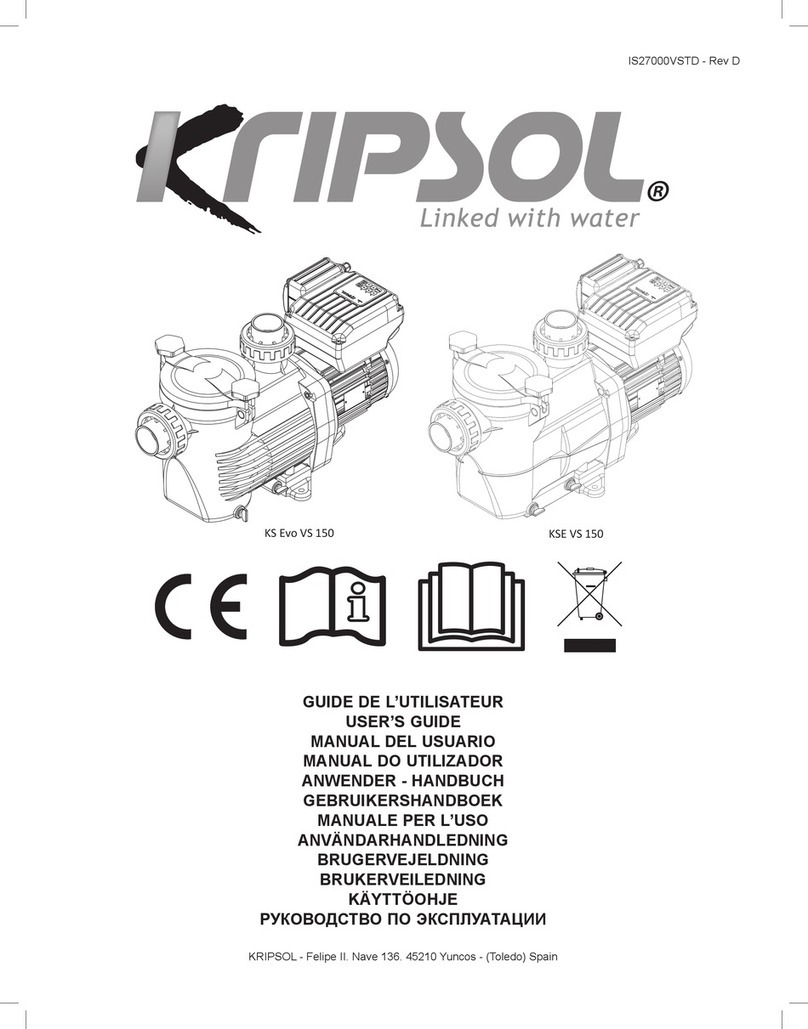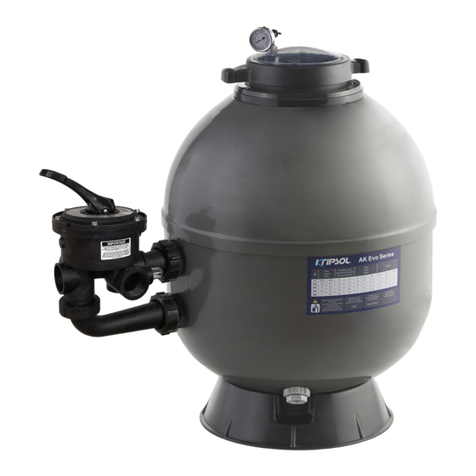de montajes en espacios muy
reducidos, el enfriamiento del aire
puede ser tan bajo que sea necesario
un sistema de aireación y desaireación
(ventilación) con el fin de no exceder la
temperatura ambiente de 40ºC.
Es importante que la reserva de
espacio sea suficiente para poder
desmontar el bloque motor en sentido
horizontal (véase dibujo de espacio
mínimo en fig. 1, pág. 38).
5.2. LOCALIZACIÓN / INSTALACIÓN.
El equipo o conjunto del grupo
motobomba, filtro y válvula selectora,
se instalará cerca de la piscina a una
distancia no superior a 3 m. de las
tomas de superficie (skimmer-
rebosadero) y preferentemente a una
cota de 0,5 m. (nunca superior a 3 m.)
bajo el nivel del agua, para conseguir
su funcionamiento “en carga”. La unión
de las boquillas y demás accesorios
empotrados en la piscina se realizará
prioritariamente en tubería de PVC.
El diámetro de las tuberías dependerá
de los caudales. La velocidad máxima
aconsejable del agua en las tuberías ha
de ser de 1,2 m/s. en aspiración y 2
m/s. en el retorno. En cualquier caso, el
diámetro de la tubería de aspiración no
debe ser inferior al diámetro de la boca
de la bomba.
La tubería de aspiración debe ser
perfectamente estanca y se ha de
instalar con una pendiente descendente
(no inferior a 1/100), evitando de este
modo la formación de bolsas de aire.
La tubería de aspiración puede ser
rígida o flexible con espiral de refuerzo
que evite la contracción.
En instalaciones fijas, con la bomba por
debajo del nivel del agua, se colocará
una válvula de cierre en aspiración y
otra en impulsión.
Para su utilización como bomba fijada a
un dispositivo móvil (durante el
movimiento del dispositivo móvil la
bomba debe permanecer fija),
prever
una adecuada protección eléctrica
y
montar la bomba sobre una base aislante.
5.3. CONEXIÓN ELÉCTRICA.
- Con carácter general, la instalación
eléctrica estará, en todo, de acuerdo
con lo prescrito en los Reglamentos y
disposiciones Técnicas Complementarias
que sean de aplicación y lo hará un
Instalador autorizado.
- La red de alimentación dispondrá de
conductores de neutro y tierra.
- La tensión de la red tiene que
corresponder con la dada en la placa
de características del equipo.
- La selección de los conductores a utilizar
tiene que ser suficiente para soportar,
sin deterioro, la intensidad absorbida
por el equipo (ver placa de características).
- Al conductor de tierra de la red se
unirán eléctricamente todas las partes
metálicas del equipo que no deben
estar bajo tensión, pero que
accidentalmente pudieran llegar a
estarlo y sean accesibles a las
personas (ver figs. 2 - 4, y págs. 38 - 39).
6
ATENCIÓN
ATENCIÓN
ATENCIÓN


































